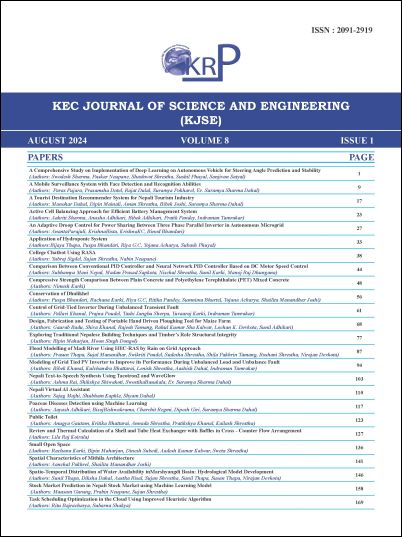Design, Fabrication and Testing of Portable Hand Driven Ploughing Tool for Maize Farm
DOI:
https://doi.org/10.3126/kjse.v8i1.69268Keywords:
Hand Driven Plough Tool, Maize farm, Soil Property, Blade Profile, Blade angle, Design and Simulation of Ploughing Tool, Rake Angle, Coefficient of Drag, SolidWorksAbstract
This paper provides insight into the performance of portable hand-driven ploughing tools on a maize farm. The focus is on the effect of ploughing blades on the soil and aims to replace traditional ploughs like spades and hoes with hand-driven tools. The goal of this paper is to reduce human effort by showing that the working velocity of the Ploughing tool is four times that of the Traditional Tool and ensure a comfortable posture for the farmer during ploughing while also offering a simple, economical, and efficient solution for ploughing and weed removal. The hand-driven ploughing tool aims to offer a suitable mechanization option for small-scale farmers, providing a solution that satisfies their needs and labor problems. The tool features a ploughing blade with a blade angle and rake angle of 45 degrees, designed to achieve the required depth of cut for the maize farm efficiently. However, it's essential to consider potential limitations or challenges associated with using the hand-driven ploughing tool, such as its effectiveness in different soil types, the physical exertion required by the farmer, and any maintenance or durability concerns. The design and simulation of the plough are developed in SolidWorks.




